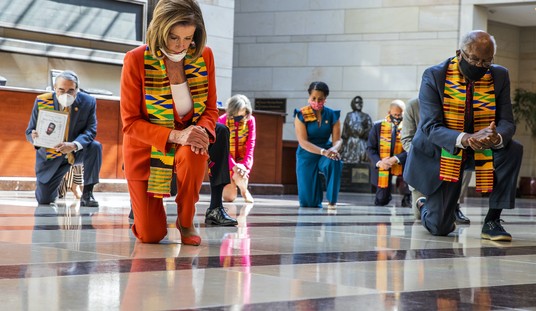
At first glance, the citizenship question on the 2020 Census form case, Dept. of Commerce vs. New York, appears to be a practical win for those wishing to keep the question off the form. There are some conflicting accounts in the media about the Census Bureau starting to print forms without the question and administration insistence they will go through with getting the question on the form. Initially, the government requested a decision as early as possible since there was this alleged July, 2019 deadline. In fact, the real deadline is October, all things considered.
Admittedly, the majority opinion, authored by Roberts, is a baffling piece of documentation. The disposition of the case boils down to the fact that the agency’s action to include the question was vacated and remanded to come up with a better explanation. He could have simply stated the reasoning was pre-textual, vacated, and remanded, but he didn’t. He did not get to that finding until Part V of the decision. Ignoring the standing aspects addressed in Parts I and II, Part III addresses the constitutional issue of the question (it is) and Part IV addresses a host of statutory and administrative law issues (the question is legal). It is only when we get to Part V where Gorsuch, Kavanaugh, Alito and Thomas start to dissent. In effect, it is the practical portion of the decision.
Put another way, to get to Part V and a lot less-lengthy opinion, there was no need to include Parts III and IV. Some believe Roberts may have suspected a different motive was at play here for inclusion of the question and did not do a good job of revising his opinion. But, Roberts is quite adept at sleight of hand when it comes to opinion writing and this reason is unlikely. Another reason is Roberts possibly knew this might again get before the Court in an expedited manner and he wanted to get ahead of the game. To understand this theory, one must follow this series of events: the case is remanded, a lower court issues an injunction against the question, it comes back before the Court who then allow it by lifting the injunction with Roberts now in the majority to do so by relying on the groundwork he laid in Sections III and IV. That also seems like an unlikely motivation.
The third theory is that Roberts included Section V so that the Department of Commerce fully knows the scope of its authority on remand. As such and as many have described this opinion, it is less constitutional law and/or statutory interpretation than it is an advisory opinion. Great pains were taken to sweep away the Constitutional issue. Likewise, great pains were taken to sweep away the statutory objections (timely notification to Congress, among others) and the administrative objections.
In the final analysis, his only complaint is one of process: that Wilbur Ross offered an explanation that seems incredulous. There is no denying that the administrative record is long in this case and Roberts (and the liberals on the Court) found an incongruence between what that long record revealed about the decision-making process. In effect, the Department of Commerce made so many mistakes and/or glaring blunders that there was no option left other than to remand.
But what the decision also does, and this is a fact overlooked by many (especially Roberts haters) is give the Department huge leeway. Ross can simply issue a new memo explaining his reasons for including the question on the Census, including the reasons originally proffered. He could throw in a desire to have a better, more accurate count of citizens for a host of governmental reasons, to help states better redistrict based on CVAP (citizen voting age population) as permitted under Evenwhel vs. Abbott, to comply with UN standards when it comes to the Census, or why he likes strawberries better than cherries. Section V suggests Ross has considerable discretion in coming up with reasons for including the question.
So here is the sequence of events: (1) Ross issues a new memo stating the various reasons for the question, (2) the resulting litigation is over whether it complies with the Administrative Procedures Act, and (3) it obviously does because Section V intimates such since the wording of that Section tilts the argument in Ross’ favor. For Roberts, the saving grace for him is that he is far-removed from from Ross’ arguments for the question. Ross has satisfied the parameters given him. To Roberts, this was a case of the process and now that the process has been satisfied, the Census Bureau can move forward.
Further, this is new territory in administrative law. When an agency action is vacated, they usually fix some procedural error or slightly revise a rule. Here, the agency’s action was vacated on grounds of pretext. The Court did not say that Ross’ decision was improper or bigoted; only that they were a “distraction.” How does one clean up a “distraction?”
Roberts may know full well this may end up before the Court again over the summer. A liberal lower court will reject any reasons offered by the Commerce Department and issue an injunction. The injunction will be appealed to the Supreme Court. The Court will, without comment, in a 5-4 unsigned decision lift the injunction. Roberts will then hide behind Sections III and IV as the reasons for his decision. He laid the groundwork. The practical implications of Section V were to temporarily avoid the inevitable and possibly appease the liberal wing of the Court. It is an action typical of Roberts. He is a weenie more concerned with consensus and elusive 7-2 or better decisions and the image of the Court than he is with Constitutional and legal principles and taking a stand. Roberts knew what he was doing here and one hopes that conflicting statements coming from the administration are the real distraction. If October is the true deadline to print these forms, as some now assert, then expect the question on the form come 2020.
This all could have been avoided if (1) the Commerce Department was not sloppy in their efforts, and (2) Roberts had stopped at Section IV of the decision. The question is: Did he have a choice, or did the Commerce Department leave him no choice? Having watched Roberts and the Court for many years, this writer votes for the former- he had a choice, but made the wrong one.














Join the conversation as a VIP Member